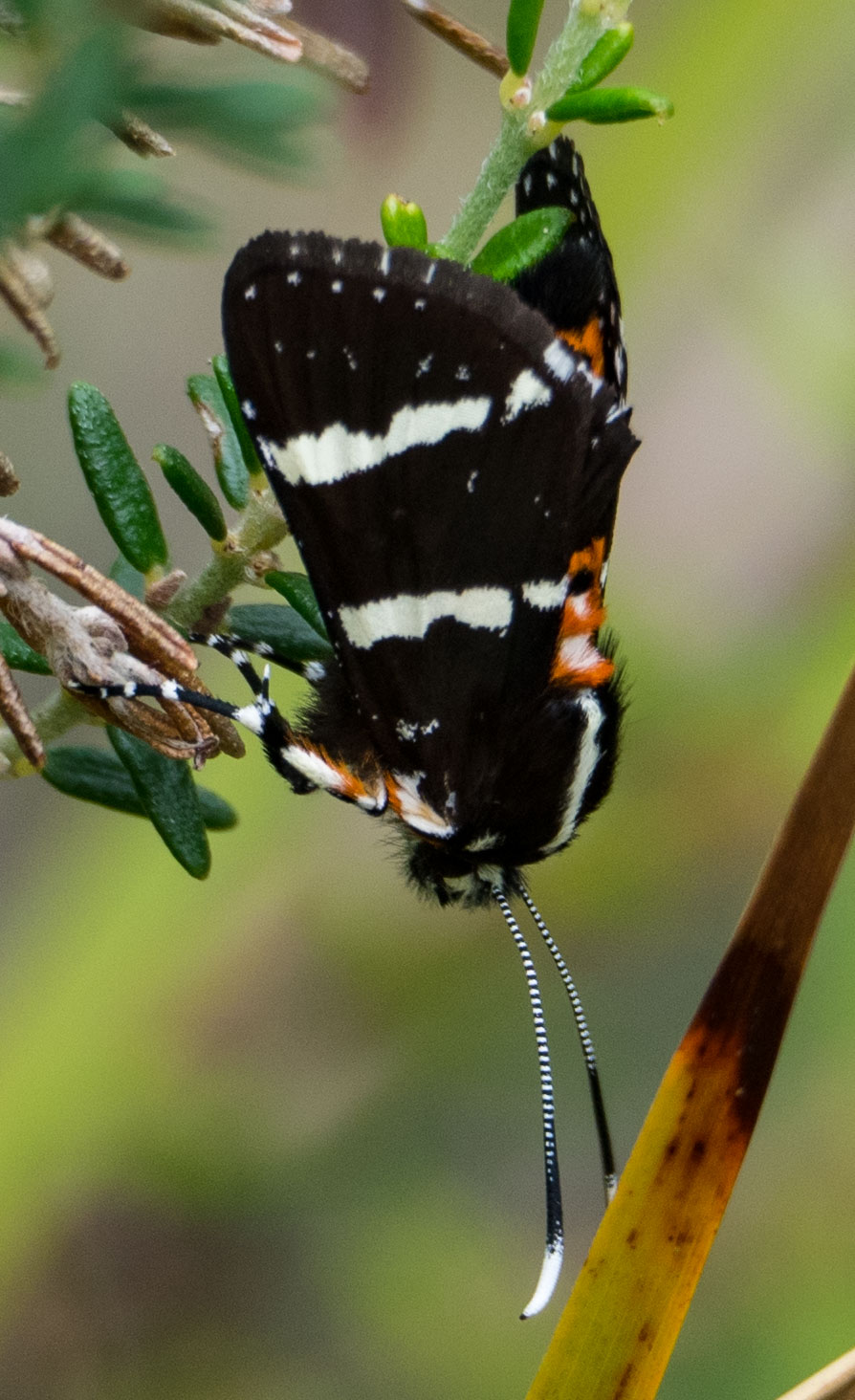Cassytha - a parasitic plant

Parasites get a bad rap. But organisms that adopt this lifestyle play important ecological roles - they're not all bad. Cassytha sp., a common parasitic plant on the block, with the pejorative common name Devil's Twine, illustrates this point nicely. Cassytha is another diagnostic species for our type of forest - Lowland Gully Shrub Forest.

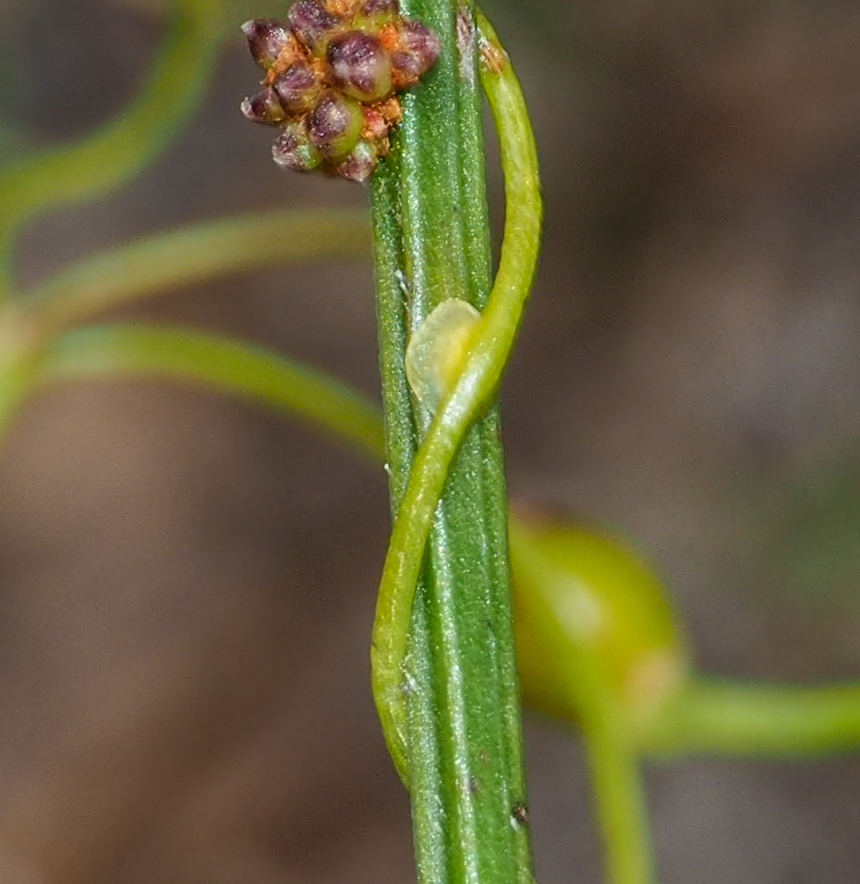
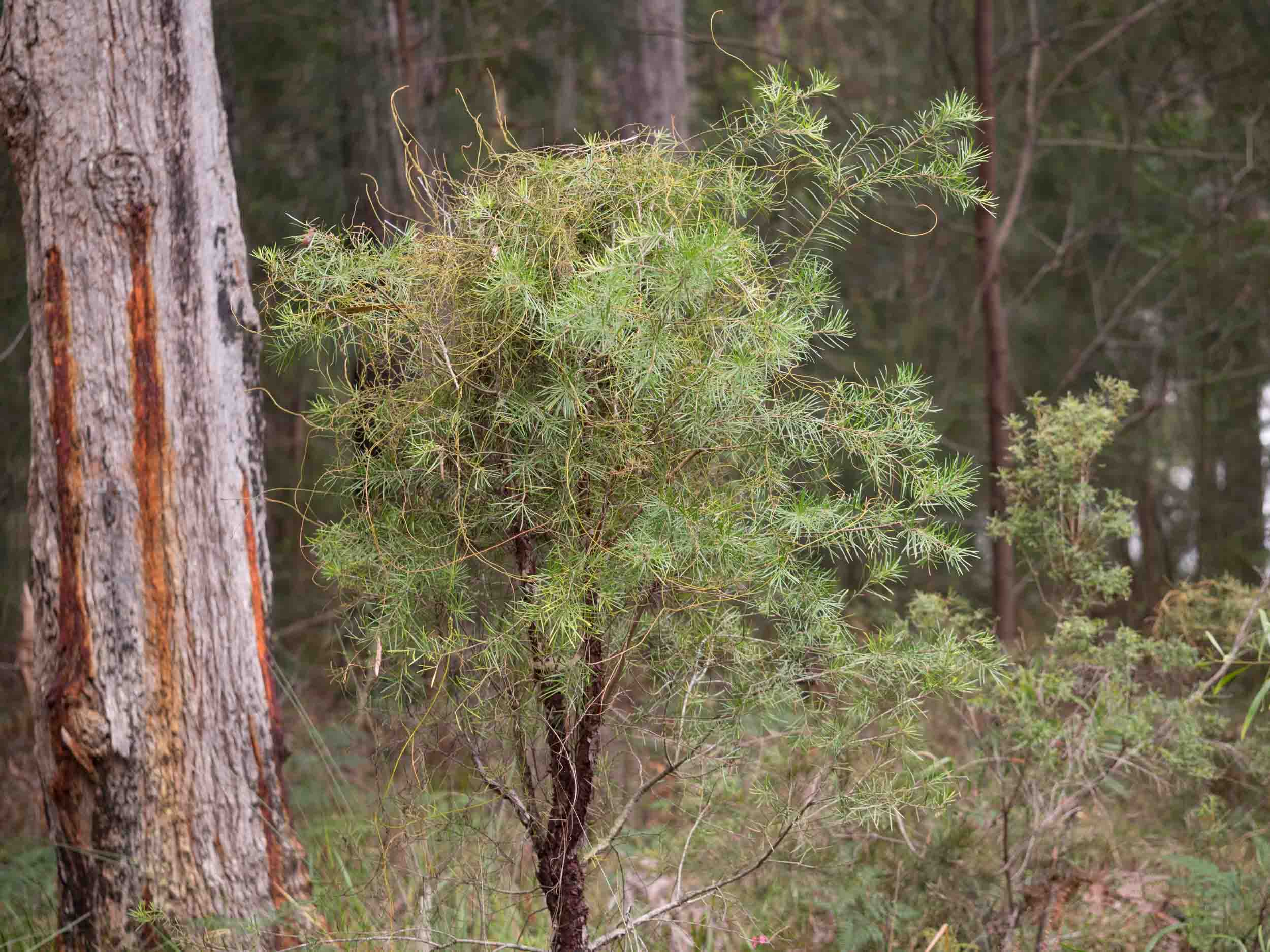
Cassytha starts out its growth as a "normal" independent plant - it germinates from a seed in the soil, forms roots and grows upwards as a vine, which twines around a nearby plant. This host plant can be anything from a low-growing forb, like Amperea, to a small tree, such as Hakea. Quite quickly, the growing Cassytha stem makes tight attachments to the stem of the host plant via specialised structures called haustoria. The haustoria enable the xylem, the mineral and water conducting vessels of the parasite, to contact the xylem of the host and extract these precious resources from the host. Once this contact has been established, the roots of the Cassytha plant die back and it becomes totally dependent on its host for its survival.
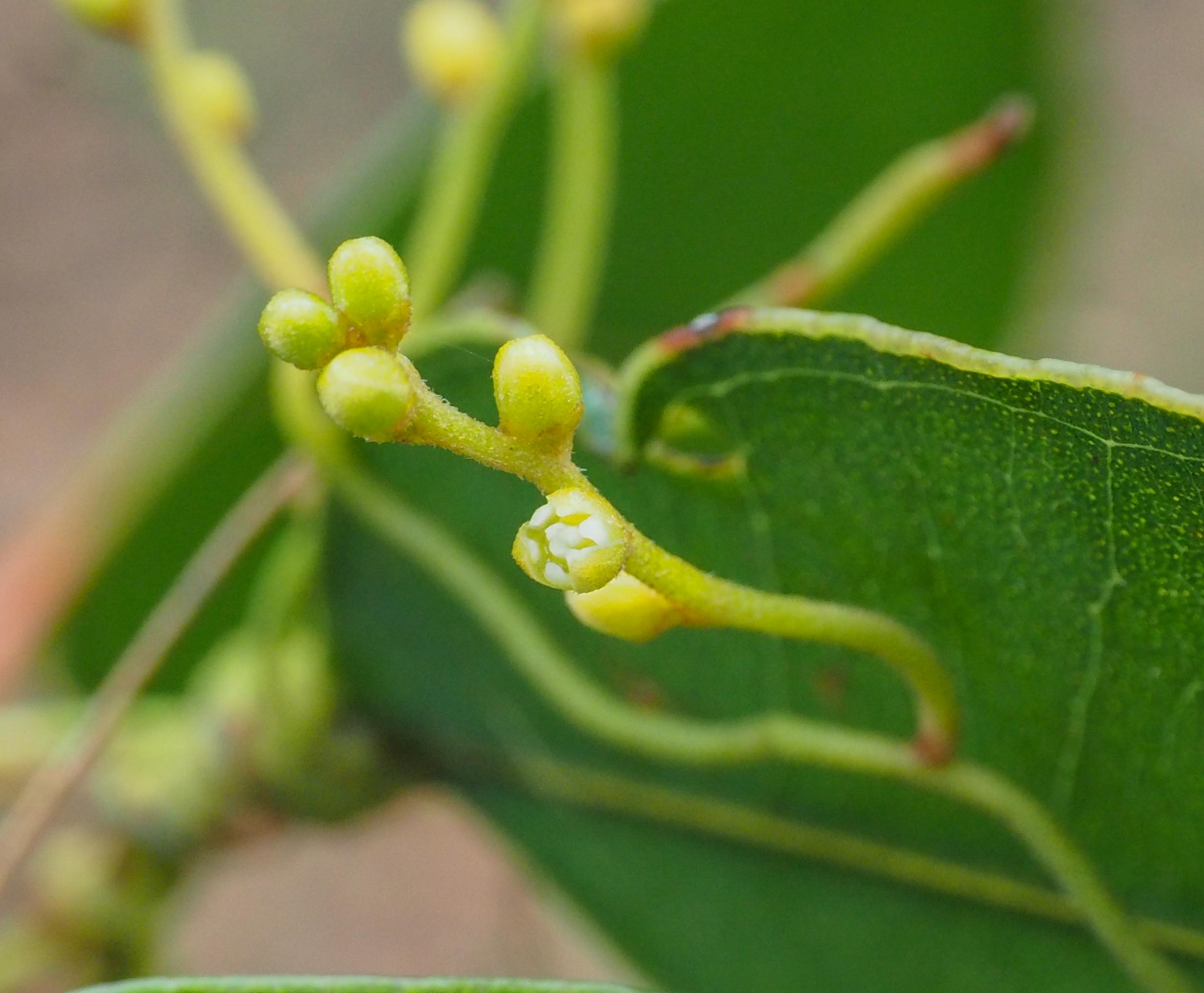
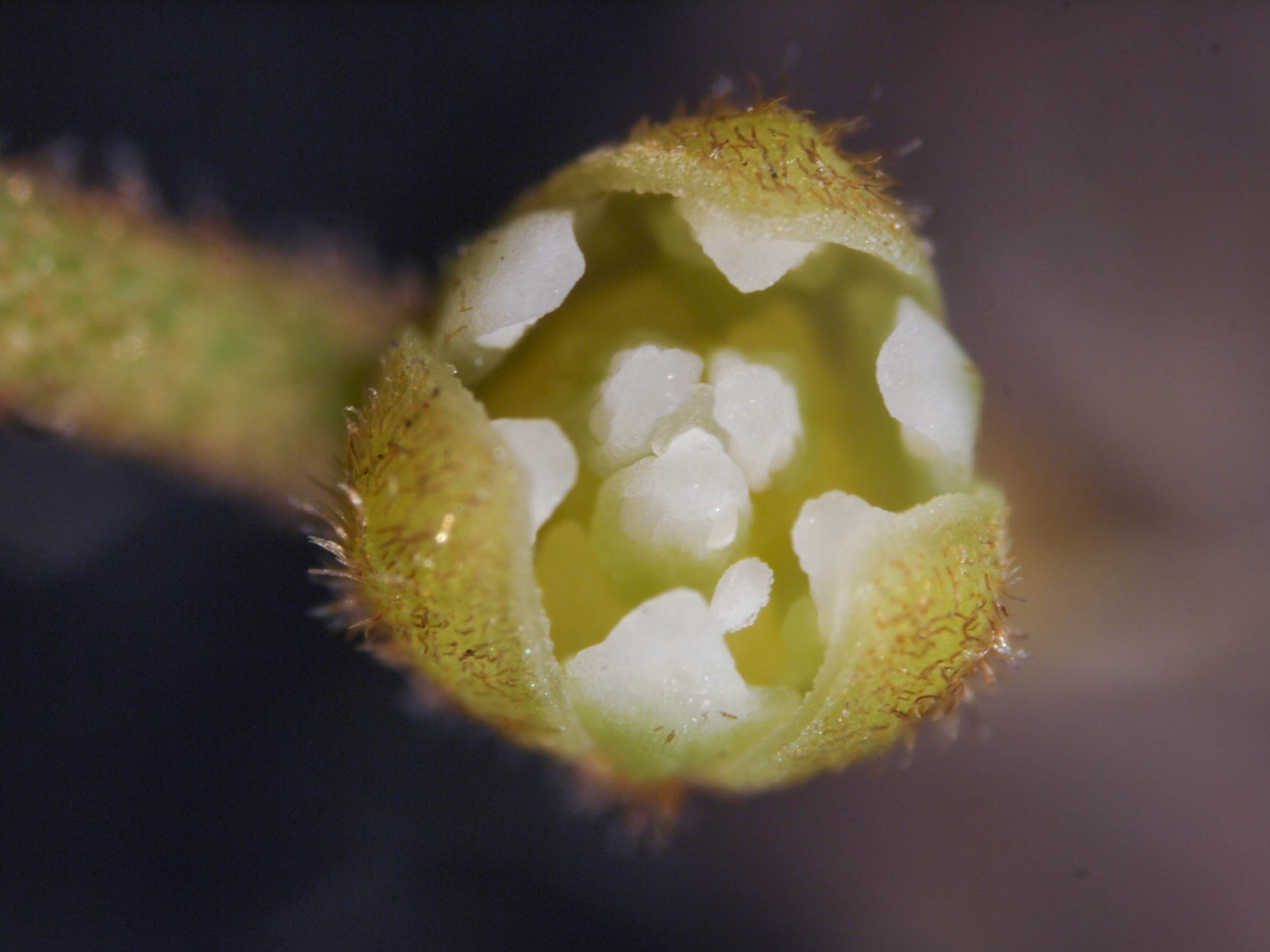
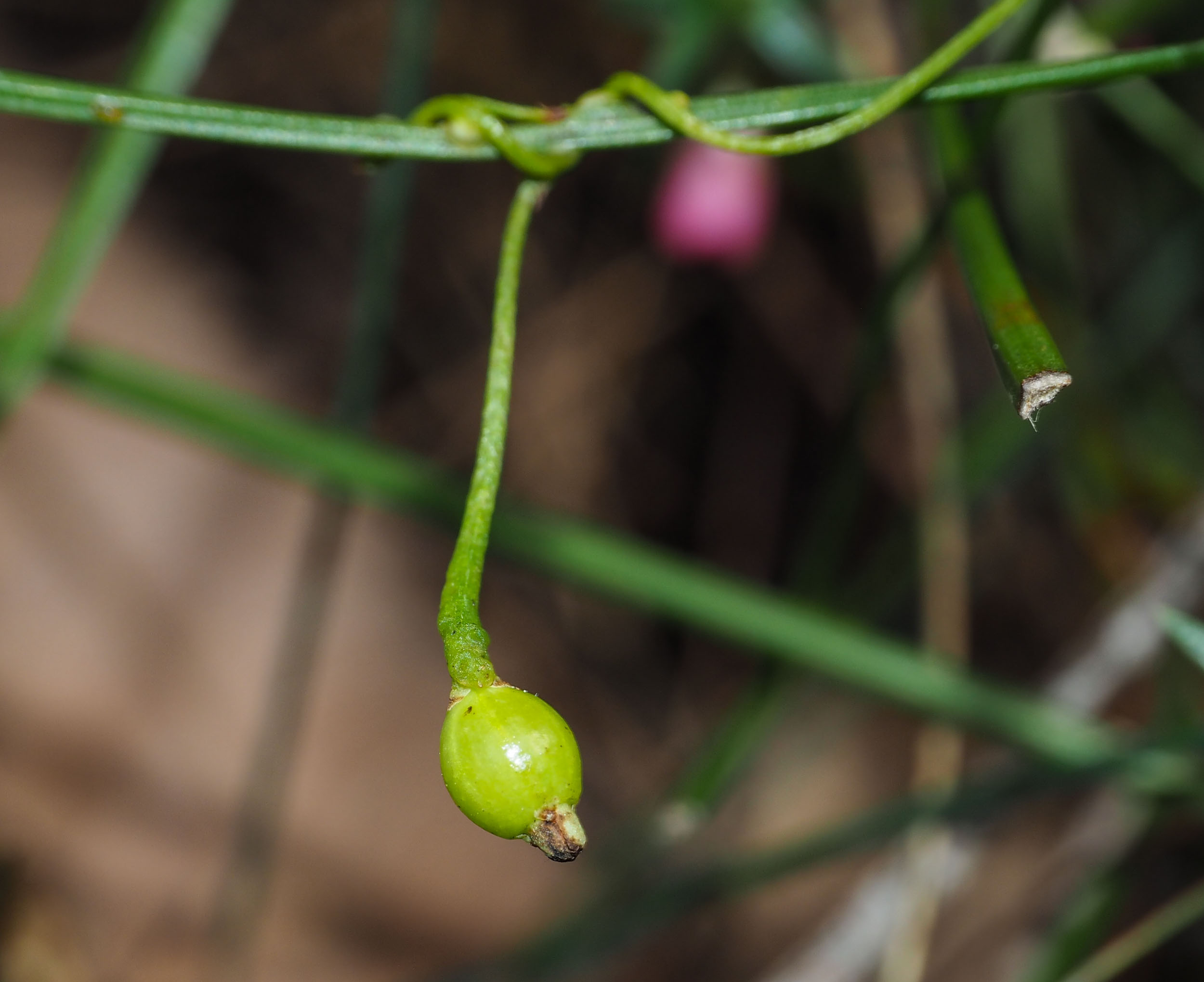
The twining stems of Cassytha are green and are therefore capable of a limited amount of photosynthesis. Hence the plant is said to be semi-parasitic. Leaves have however been reduced to tiny scales. Flowers form on the Cassytha stems in late Spring and develop into tiny berry-like fruit when pollinated. The fruit is probably eaten and disseminated by birds or otherwise drops into the soil around the host plant to complete the life-cycle.

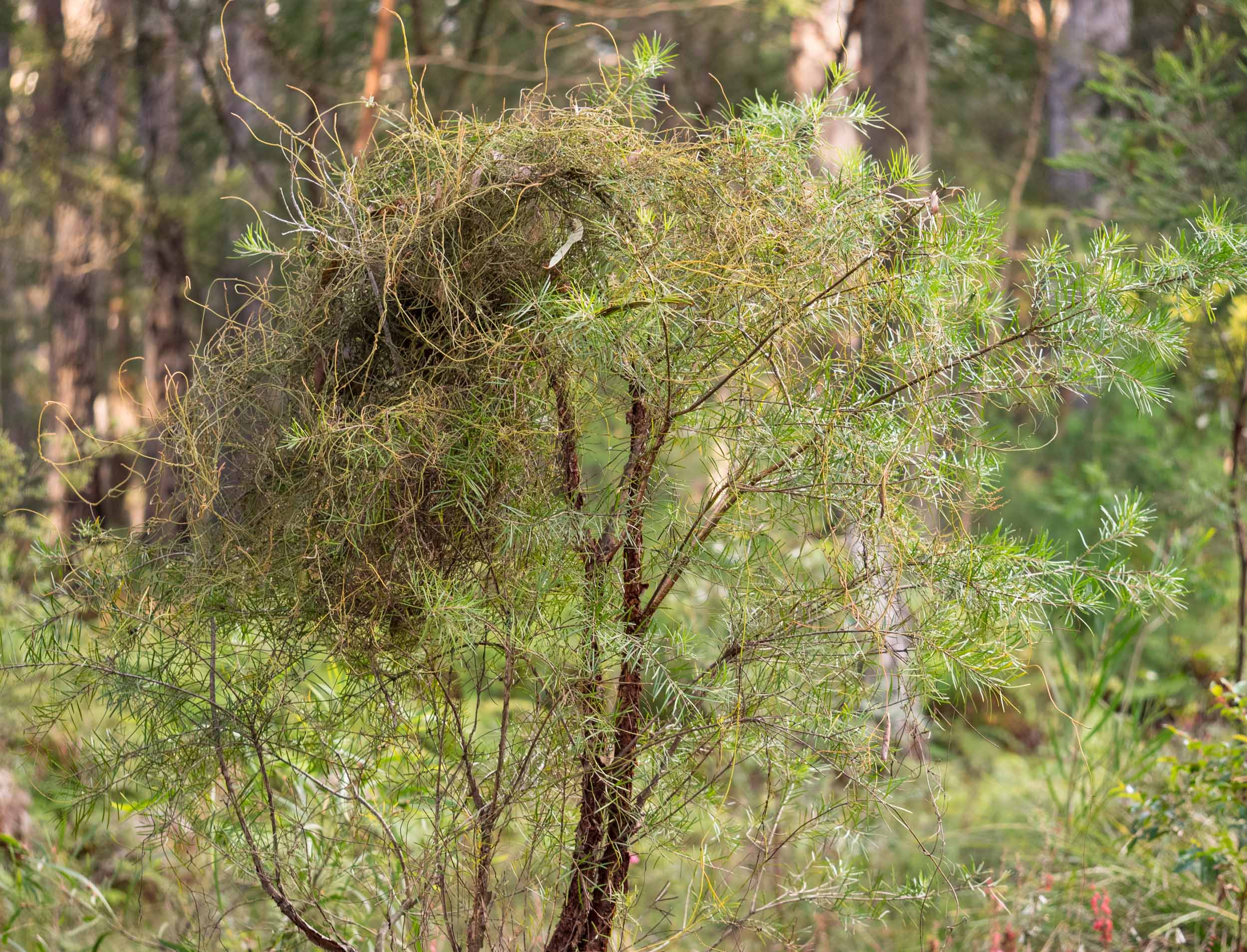
So what good can be said about this parasite? Firstly, while Cassytha almost certainly limits the growth of its host plant, it does not generally kill it. In many cases the host plant looks quite healthy and on occasion the Cassytha dies back, leaving the host looking none the worse for wear. Secondly, Cassytha itself provides food for a range of animals. Honeybees feed on nectar in the flowers and the caterpillars of several species of butterflies (such as the Common Dusky Blue) and moths (such as the Common Whistling Moth) eat its stems. Finally, the twining stems of Cassytha provide the perfect material for the construction of both roosting and breeding nests by Red-browed Finches. These birds weave the stems into a dense tangle within which they build their flask-shaped nest, fashioned from grass stems collected nearby.

